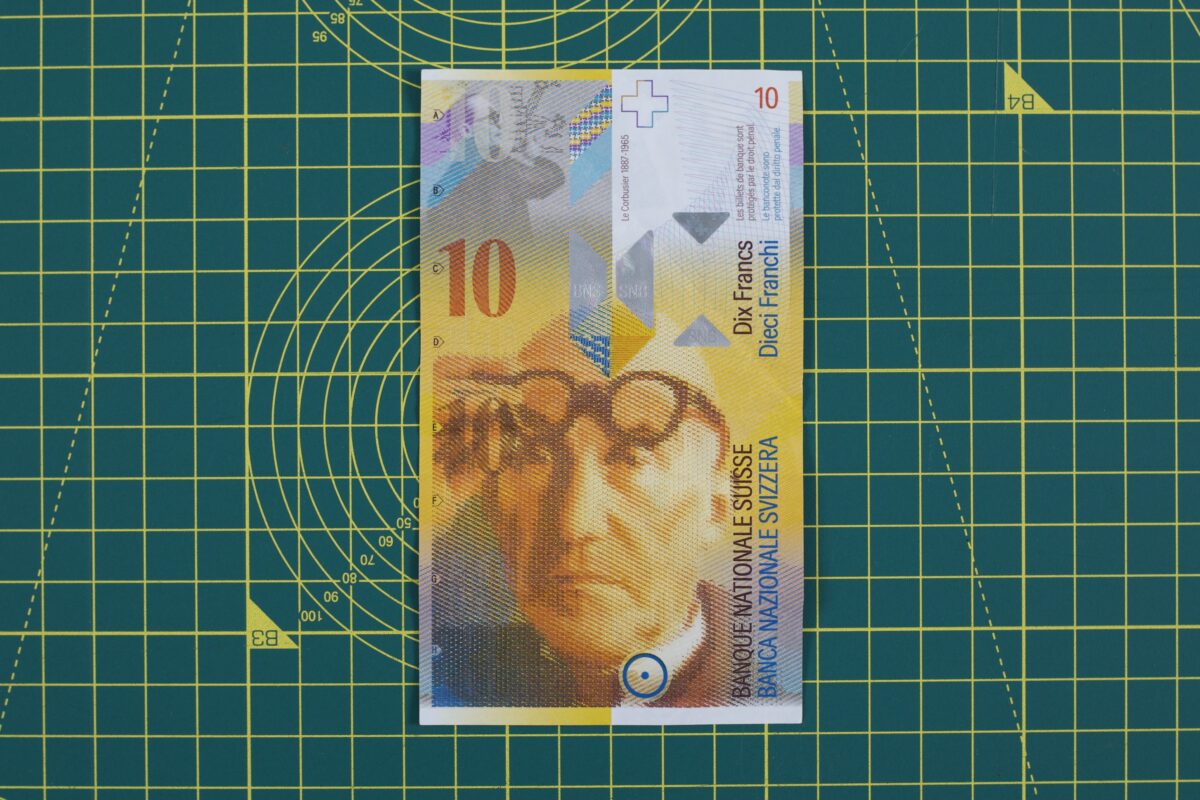Capitol or Capital?
Thoughts on the Design of Housing and Banknotes
From the Editors:
1. We have been re-reading Martin Pawley’s collected essays.
Each comes as a rich reminder that here was the contrarian voice of the 1970s and 80s, whose commentary – on architecture, architects and contemporary society – ought to be replayed to readers now on a continuous, salutary, loop. Again and again, one reads something that skewers a contemporary foible of practice, or an exciting new turn in housing policy – only to look at the date of publication, and discover it was written forty-five years ago.
2. And then, for many years Drawing Matter has been collecting old banknotes.
Wherever they can be found – at street markets in Iran or Bangladesh, the Marché aux Puces, or from car boots in England. Before the haggling begins, they must generally have lost their face value – having survived the overthrow of a regime, hyperinflation, or simply being withdrawn from circulation.
And they must always show a building of some sort. Be the building new or old, we enjoy central bankers anxiously demonstrating their openness to modernity, or proudly referencing some earlier civilisation sur place.
We have wondered often how to make something of this eccentric collection for our readers on www.drawingmatter.org. And so, finally, a neat pretext to republish the lovely polemic by Pawley that follows here, and then illustrating it with our mouldering bank notes. As you will see, the pairing is slightly imperfect; but the dates do work quite well, and certainly each make powerful arguments for a disturbing correlation – between financial confidence and what it is that architects claim to be making.

Thoughts on the Design of Housing and Banknotes
The other day a curious letter arrived addressed ‘To our friends at’
followed by the correct number, street, city and zip. Through the windowed envelope could be seen ‘credit to the order of’ and then, in the exciting fuzzy red numerals of a cheque-writing machine, ‘$25,000 and oocts’. I looked at the return address and saw that it came from a mortgage and investment company. Cautiously I slid the blade of my Swiss army knife across the top seam and withdrew the contents. Sure enough, it was a come-on, with an ornately designed ‘cash availability certificate’ and a form letter beginning ‘Dear __ Your house is a kind of savings bank.’
When I first started out in architecture I was told, and I suppose believed, that my house was a machine for living in. Designing a machine for living in was a tricky task, but rewarding, for a fine private residence could establish a reputation and go on reinforcing it on glossy pages long after it had been irretrievably mutilated by its occupants. The problem with machines for living in was to make them good but cheap, so everybody could have one.
This led to dymaxion dwelling units, industrialised building, the mobile home industry and other matters of interest to architects. Indeed the most important role any architect could perform was often characterised as the matchmaking of the productive capacity of machines to the global and growing need for housing. Of course, this is passé stuff nowadays, as my
mortgage and investment company explains: the real thing is home ownership and its encyclopaedia of economic benefits.

Today it is difficult to open a newspaper without being advised to buy a house. People apparently do still write to columnists asking if they should do it now or wait until next year, but they always get the same answer. Perhaps the letters are written by realtors. In the last ten years the value of the average American home has risen from $26,ooo to $65,000, such a colossal increase that property taxes, once a trivial adjunct to home ownership, are now so high that some skilful traders-up, having parlayed early purchase into small fortunes using their $12,000 or $14,000 incomes mainly for interest payments, are now faced with ruin.
Such investors are to be found all over the United States camping in smart suburban neighbourhoods, converting carports and garages, excavating swimming pools, multiplying floor area with never a thought for furniture or comfort or permanence, only for resale and the replacement rule. The much touted ‘taxpayers’ revolt’ is of course the response of these individuals to the injustice of being taxed as though they were millionaires when in fact they are only gamblers.

If these are the facts of the housing market, how should the architect relate to it? Clearly it is futile to fiddle with energy or the five points of architecture when the real issues are points of interest. Futile, too, to harmonise with historical styles when all the sporting investor wants is to combine all the historical imagery he has ever seen or heard about. The mobile home industry is way ahead of the architectural profession in this matter; the speed with which manufacturers switched from streamform to log cabin was wonderful to behold. No accident that double- and triple-wides can now be financed over 20 or 30 years, just like ‘real’ houses.
The successful designer of houses today can no longer study briar pipes, steam ships or automobiles, nor can he profitably dwell on the bottomless excesses of postmodernism. Better by far to immerse himself in investment imagery; to study the semiology of banknotes, share certificates, stocks, bonds and debentures. Gothic lettering, pyramids, eyes, scrolls and Latin inscriptions, these are the elements of the new domestic architecture. The world would surely beat a pathway to the office of the architect who actually made houses look like the units of trading they have become.
Excerpted from The Strange Death of Architectural Criticism: Martin Pawley Collected Writings (Black Dog Press, 2007), 70–1.
Postscript – Only after photographing the banknotes for this text, did it emerge that no image processing software allows one to work with them, for fear – presumably – of forgery.


– James Gowan